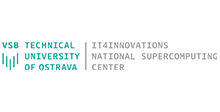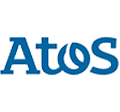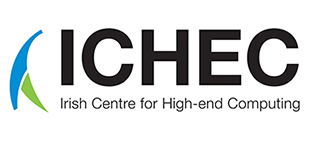The LEXIS front door to the Internet of Things era
We are living in a new era of computing and communication technology, where the Internet of Things (IoT) plays the role as a key technological tool that enables physical data acquisition, efficient data exchange, and seamless connection to today’s advanced computing systems. Over the last years, IoT has drastically pushed forward the interactions between humans, nature, and physical objects. The diffusion of IoTs has been so promising and successful that the number of active devices is forecasted to exceed 25 billion by 2030. All kinds of industrial and consumer markets are fertile ground for IoT applications. In order to serve increasing user needs from industry and society, the LEXIS consortium designed a Smart Gateway (SG) to be the LEXIS front door to the IoT ecosystems.
Why don’t we get an off-the-shelf solution but design a new gateway?
It is simply because our innovative solution was designed to maximise the balance between connectivity, computing capabilities, security, and power consumption.
Smart Gateway all-round features
The Smart Gateway functions as a bridge between LEXIS and the physical world, whose data can be sensed, acquired, measured or actuated by IoT devices (see the diagram below). It was designed as an embedded computing architecture based on a 32bit 216MHz ARM Cortex M7 MCU+FPU that features computing resources scaled to the application, with native uC Linux support (reduced version of Linux tailored for smaller sized CPUs). In addition, the unit consumes extremely low power.
In fact, the power need is very low that the SG can be fed by a small solar panel and can stay operative 24/7. Thanks to its integrated LiOn batteries, battery charger, and high-efficiency power management unit, SG can be powered from any low voltage source ranging from 5V to 24V.
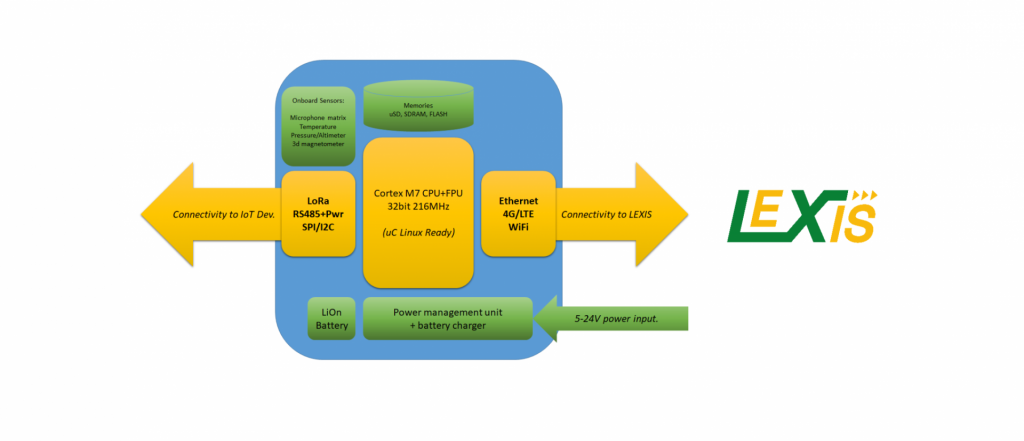
Regarding connectivity, the Smart Gateway offers full flexibility. The communication to the LEXIS platform and to the IoT devices is possible either wired or wireless, as the unit features with Ethernet, 4G/LTE and WiFi. It also features a LoRa modem, an RS485 bus that supports several industry standard communication protocols, as well as local SPI and I2C busses in case the electronica card is integrated into a finished product.
Depending on the use case, the LoRa module can be set up as a LoRaWAN device, or it can be programmed to implement a custom protocol relying on the native modulation and radio carrier.
Since the Smart Gateway was invented with the IoT mindset where the data is acquired, validated, and preprocessed locally, the unit offers a consistent set of memories, spanning from an amount of SDRAM large enough for the processor to run complex algorithms, to a FLASH memory to store function parameters and finally to an uSD card for local raw-data storage.

Smart Gateway integrated into the LEXIS workflow
The basic assumption is that several users will have several gateways and that each user will access and manage its own devices and data. In order to increase the SG usability in terms of interoperability as a standard product, we standardised the data exchange mechanism in LEXIS.
To facilitate different technical requirements, one LEXIS project is created for each user, together with its own Time Series Database. All data from all registered Gateways are managed by a single Message Queuing Telemetry Transport (MQTT) broker that sorts and redirects the data to the prescribed LEXIS Project (see the Smart Gateway LEXIS workflow below). The MQTT protocol was chosen because of its lightness and easiness in the management of data flows from different devices.
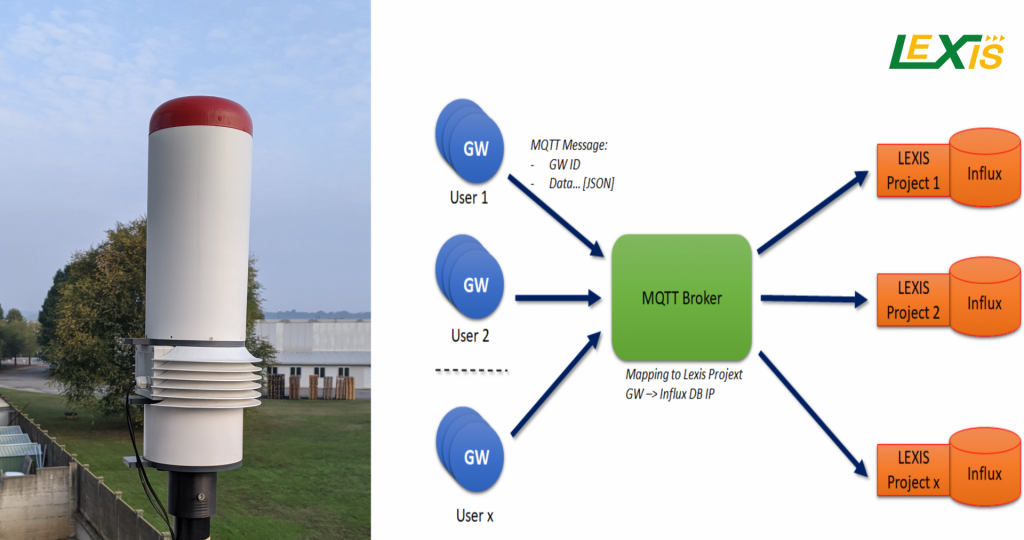
Right: The Smart Gateway LEXIS workflow.
The communication between the Smart Gateway and the LEXIS platform is established through a standard Internet connection. Thanks to the said standardisation, the set-up is as simple as plugging a connector; the Smart Gateway does the rest on its own. When a wired infrastructure is not available, it connects to the Internet through the embedded 4G/5G module. Once SG is online, a secure point-to-point connection is established through an encrypted tunnel, where it is asked to authenticate before data exchange can be started.
Apparently, the Smart Gateway has contributed to the Data Lake concept, one of the pillars of an IoT ecosystem. In particular, the device carries low-power Micro-Electro-Mechanical Systems (MEMS) sensors (temperature, pressure/altimeter, microphone matrix, and 3 axis magnetometer) that on one side acquire information required to estimate boundary conditions. On the other side, it sends the collected data to the LEXIS platform, where complex data analytics can be implemented.

